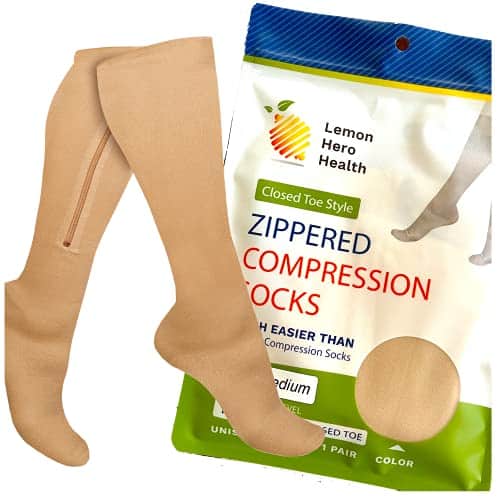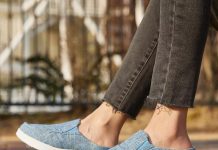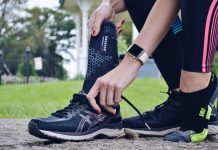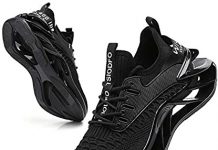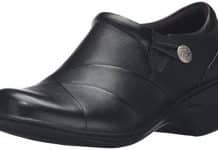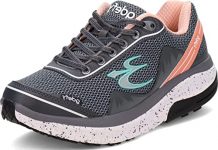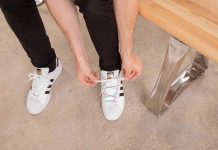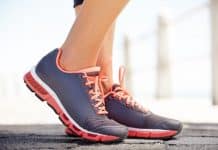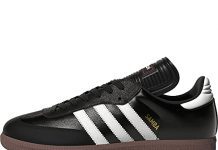Are you tired of dealing with swelling, discomfort, and poor leg circulation? Compression socks might be the solution you’ve been looking for!
These specialized garments are designed to apply pressure to your lower legs, helping to improve blood flow and reduce swelling.
However, when choosing the right pair of compression socks, there’s one crucial decision you’ll need to make: open-toe or closed-toe.
In this blog post, we’ll explore the differences between these two types of compression socks and help you decide which is best for your needs.
So please sit back, relax, and let’s dive into the world of compression socks!
Is it difficult to move your toes when wearing compression socks or stockings?
Is your toe too sensitive and needs to move freely?
Or do you not wear compression stockings in the summer?
If you need a little room for your toes or want something that will look great with summer sandals, you need open-toe compression socks or stockings.
Why Wear Open-Toe Compression Socks vs. Closed-Toe
Compression stockings are specialized hosiery garments designed to improve blood circulation in the legs, helping to prevent blood clots, reduce swelling, and alleviate symptoms of various circulatory conditions.
These stockings apply graduated compression, meaning the pressure is tightest at the ankle and gradually decreases towards the top of the stocking, promoting efficient blood flow back to the heart.
Not just providing footwear flexibility, open-toe compression stockings are ideal for people with toe conditions like ingrown toenails, bunions, open sores, etc.
Due to their open design, you can keep moving them freely. There isn’t much difference between the two socks/stockings. It’s more about personal style preference.
The following guide will cover everything about open and closed-toe compression socks and stockings to help you decide which is correct.
Top Features
Choose socks that are of the highest quality when buying open-toe pressure socks.
A combination of durability, comfort, and effectiveness makes a perfect compression sock.
Closed Toe Compression Socks
Like standard socks, these socks cover your entire toes. However, closed-toe stockings provide full foot coverage and are more suitable for frequently wearing closed-toed shoes.
These are also ideal for wearing additional gear to protect or cover your feet.
Compression thigh highs with closed-toes are better for colder months since the full coverage keeps you warm. They are best worn with skirts and dresses in the Fall and Winter seasons.
Open Toe/Peep Toe Compression Socks
The term open toe is often confused with traditional closed-toe stockings; however, many people know what it relates to compression.
It is essential to understand that open-toe garments are NOT the same as footless ones. There’s a big difference between the two!
Footless garments end below the ankle, while open-toe garments extend past the ankle, over the heel, and up to the toes.
The ankle and foot support feature is essential for people with advanced conditions and those experiencing swelling in those regions. Also, the Asian style ends just below the toes. It’s an excellent option for the summer months and when you want more footwear flexibility.
Open-toe stockings are ideal for individuals with foot conditions such as ingrown nails, bunions, open sores, etc. If you need an open-toe for the conditions listed and want to wear a closed-toe shoe, you can layer the open-toe compression knee-high under a cotton ankle sock.
It provides the coverage you need for inside shoes without binding sore tootsies. When putting on open-toed items, pull the end past the ball of your foot and to the base of your toes.
Do not leave the end in the arch of your foot. This may cause bunching and discomfort in your arch.
Read Next – Best Shoes for Bunions and Flat Feet
What are Compression Socks?
Compression socks are specialized garments designed to help improve circulation and reduce swelling in the lower legs. They apply gentle pressure to the muscles and veins in your legs, helping push blood back toward your heart. This can be particularly beneficial for individuals who spend much time on their feet, such as athletes or those with certain medical conditions.
Compression socks come in various styles, materials, and compression levels. Some are knee-high, while others extend up to the thigh. They can be made from synthetic materials like polyester or natural fibers like wool or cotton.
The level of compression these socks offer is measured in millimeters of mercury (mmHg). The higher the number, the more pressure will be applied to your legs. Compression levels typically range from 15-20 mmHg for mild support to 40-50 mmHg for medical-grade compression.
Whether you’re an athlete looking to enhance performance and recovery or someone dealing with circulatory issues like varicose veins or edema, compression socks may be just what you need!
Zippered Compression Socks Closed Toe 20-30mmHg with Zipper Safe Protection & Closed Toe (Large Short, Beige)
Made in USA Opaque Compression Socks Knee-Hi Closed Toe Support Hose 20-30mmHg - Unisex (X-Large, Beige, x_l)
Thigh High Compression Stockings, Closed Toe, Pair, Firm Support 20-30mmHg Gradient Compression Socks with Silicone Band, Unisex, Opaque, Best for Spider & Varicose Veins, Edema, Swelling, Beige L
Open Toe vs. Closed Toe Compression Socks
Regarding compression socks, one of the most important factors is whether you want an open or closed-toe design. Open-toe compression socks have a hole at the end of the foot, while closed-toe designs cover your entire foot.
Open Toe Compression Socks are ideal for those who suffer from bunions, hammertoes, and other foot conditions that cause discomfort. They allow your toes to move freely and don’t pressure them. Additionally, they’re perfect when wearing sandals or flip-flops, as there isn’t anything covering your toes.
Closed Toe Compression Socks provide support throughout your entire foot, which makes them better suited for individuals who experience swelling or pain in their feet. Closed-toe designs help prevent pooling in the feet by compressing all parts equally, ensuring blood flows back toward the heart.
Ultimately, both compression socks have many benefits depending on your needs. It’s essential to weigh these pros and cons carefully before deciding which type would be best for you!
The Benefits of Compression Socks
Compression socks have been gaining popularity in recent years for a good reason. These specially designed socks provide a range of benefits that can improve your overall health and well-being.
Compression socks’ main benefit is their ability to improve blood flow. Applying pressure to the legs helps increase circulation and prevent blood from pooling in the lower extremities. This can reduce swelling, fatigue, and discomfort in the legs.
Compression socks are also great for athletes or anyone who spends much time on their feet. They can help reduce muscle soreness and fatigue after exercise, allowing you to recover faster and perform better during your next workout.
Additionally, compression socks can lower the risk of developing deep vein thrombosis (DVT). DVT is a serious condition where blood clots form in veins deep within the body. Compression stockings improve blood flow through these veins, reducing the likelihood of clot formation.
Wearing compression socks may even reduce symptoms associated with varicose or spider veins. These conditions are often caused by poor leg circulation but can be improved with regular compression stockings.
Compression socks have many benefits – improved circulation, reduced muscle soreness, and faster recovery. If you’re looking for an easy way to boost your health while going about your daily routine – consider investing in a pair today!
How to Choose the Right Compression Sock
Choosing the right compression sock can be daunting, especially if you are new to using them. However, there are some things that you can keep in mind to ensure that you choose the right one for your needs.
Firstly, consider what activities you will be doing while wearing compression socks. Different activities require different levels of compression and support. Higher compression is recommended for running or engaging in high-impact sports.
Secondly, think about the length of the sock. Compression socks come in various lengths – knee-high, thigh-high, or ankle-length. The best length depends on where you need support and how much coverage is required.
Thirdly, please pay attention to the materials used in making the socks, as they can impact comfort and durability. Look for breathable fabrics like nylon or spandex, which help wick away moisture from your skin.
Last but not least important is fit! Make sure to measure yourself correctly before choosing your size so that they fit snugly without causing discomfort.
These tips will help make choosing the right compression socks easier and more successful!
Zippered Compression Socks Closed Toe 20-30mmHg with Zipper Safe Protection & Closed Toe (Large Short, Beige)
Made in USA Opaque Compression Socks Knee-Hi Closed Toe Support Hose 20-30mmHg - Unisex (X-Large, Beige, x_l)
Thigh High Compression Stockings, Closed Toe, Pair, Firm Support 20-30mmHg Gradient Compression Socks with Silicone Band, Unisex, Opaque, Best for Spider & Varicose Veins, Edema, Swelling, Beige L
How do compression socks work?
Compression socks apply pressure to the legs, ankles, and feet, promoting blood flow and reducing swelling. The graduated compression design of these socks applies more pressure at the ankle than at the calf, creating a gentle squeezing effect that helps push blood back up toward the heart.
This increase in circulation can help reduce fatigue, prevent swelling, and alleviate pain caused by varicose veins or edema. By improving circulation throughout the lower limbs, compression socks also aid in reducing muscle soreness after exercise.
The pressure applied by compression socks is measured in millimeters of mercury (mmHg), with different levels available depending on your needs. Lower mmHg levels are typically recommended for mild discomfort and prevention, while higher levels may be necessary for medical conditions or post-surgery recovery.
It’s important to note that compression socks should fit snugly but not feel restrictive or uncomfortable. They should also be worn consistently throughout the day to achieve maximum benefits.
Wearing compression socks can help improve overall leg health through increased circulation and reduced swelling.
Different types of compression socks
There are various types of compression socks available on the market. Some popular types include athletic compression socks, medical-grade compression socks, and travel compression socks.
Athletic compression socks enhance physical activity by increasing blood flow and reducing muscle fatigue. They come in various styles, including knee-highs, calf sleeves, and ankle-length options.
Doctors prescribe medical-grade compression socks as a treatment for conditions such as deep vein thrombosis (DVT), varicose veins, and lymphedema. These types of socks apply pressure from the ankle upward to improve circulation.
Travel compression socks help reduce swelling during long flights or car rides. They gently pressure the lower legs and feet to promote blood flow.
Different compression levels are available depending on your needs, ranging from mild to firm. It’s essential to consult a doctor or specialist when choosing which type of sock is right for you based on your needs and health concerns.
Which is better for you?
There is no one-size-fits-all answer when choosing between open-toe and closed-toe compression socks. Both types have their own set of benefits depending on your individual needs.
For those open-toe compression socks that may be more comfortable for larger feet or who experience discomfort in the toes, open-toe cow for more wiggle room. They also tend to be more relaxed during calm weather since they expose the toes.
However, closed-toe socks provide complete coverage and can help with swelling in the entire foot. They are also ideal for those looking for added warmth during colder months.
It’s important to consider why you wear socks before deciding which type is best suited for you. If you’re using them while exercising or standing for long periods, be the better option. But closed-toe could be most beneficial if you need full leg support or suffer from edema throughout your foot.
Ultimately, your doctor or physical therapist must decide which option might work best for your situation.
When To Wear Toeless Socks?
Open-toe socks or stockings end at the toe’s base, making them more suitable to wear with summer sandals, flip-flops, or peep-toe shoes.
Compared to traditional socks with covered toes, these socks are highly breathable because your toes are uncovered.
Who Should Wear Toeless Socks?
Toe-less or peep-toe compression stockings are ideal for
People with large shoe sizes or long toes.
People with delicate feet or sensitive toes.
People with long nails, bunions, or open wounds.
People who are looking for super comfort without their toes being restricted.
Whether you have any toe conditions or feel discomfort or restrictions when using compression stockings, the open-toe stockings will provide better freedom and allow more significant movement of your toes.
Read Next – Best Men’s Dress Socks
How To Choose: Comparison Open Toe vs. Closed Toe
Both open and toe-closed stockings are beneficial to your leg health. Each will benefit you somehow, but which one will be most beneficial to you?
Choosing between open and closed-toe socks is preferred if you do not suffer from specific toe conditions, such as bunions or toe sensitivity.
Here are the significant benefits of each of them that will help you make your final decision.
Write benefits in a table so it will make it easy to read side-by-side
Read Next – The Best Socks to Prevent Blisters
Benefits
Open Toe Closed Toe
It is an excellent choice for summer shoes and hot conditions (also great for ladies who want to show off their pedicures and painted nails).
Suitable for wearing during cold weather or with closed-toe shoes.
• Ideal for those who suffer from toe pain, hammertoes, long toenails, bunions, etc.
• Covers and protects the foot entirely
• Easier to put on and take off.
• Moderate compression provides supportive and toning effects.
• No cramping or restricted toes.
This is ideal for working out as it covers your entire feet, so you don’t have to worry about getting blisters.
Medical Benefits Of Toeless Compression Stockings
Clinical studies have shown that compression socks and stockings can relieve swollen feet and reduce edema. They reduce the risk of lymphedema, Deep Vein Thrombosis (DVT), and chronic venous disorders.
Doctors recommend opening and closing stockings to treat varicose veins, phlebitis, inflammations, soreness, and blood clots. These are also helpful if you suffer from swelling or pain in your feet or toes.
A pair of toeless socks are also helpful for reducing swelling during pregnancy. Since swelling is joint in people on complete bed rest, it is beneficial for patients recovering from surgery to wear these until they return to their routine.
Additionally, diabetes patients benefit from these products as they require special care for their lower legs. These light compression socks will protect their feet from wounds and minor injuries.
Zippered Compression Socks Closed Toe 20-30mmHg with Zipper Safe Protection & Closed Toe (Large Short, Beige)
Made in USA Opaque Compression Socks Knee-Hi Closed Toe Support Hose 20-30mmHg - Unisex (X-Large, Beige, x_l)
Thigh High Compression Stockings, Closed Toe, Pair, Firm Support 20-30mmHg Gradient Compression Socks with Silicone Band, Unisex, Opaque, Best for Spider & Varicose Veins, Edema, Swelling, Beige L
Conclusion:
Finally, Open-toe compression socks are more breathable and comfortable than full-covered socks.
Ttoeless stockings can help treat various toe conditions, including ingrown toenails, corns, and bunions.
They also allow people mild compression benefits while wearing flip-flops in warmer months.
Make sure you check your legs and feet regularly for redness, irritation, or any other changes caused by the compression stockings.
Compression socks are an excellent option for those looking to improve their circulation and alleviate discomfort in their legs. Choosing open-toe or open-oee compression socks depends on your personal brand needs.
Open-toe compression socks are ideal for wearing sandals or flip-flops while getting the benefits of compression therapy. Closed-toe compression socks provide full coverage and can be worn with any shoe.
When selecting the right pair of compression socks, it’s essential to consider essential factors such as the level of compression required, material used, size, and fit. Always consult your doctor before using them, especially if you have existing medical conditions.
Wearing either open-toe or open-toe compression socks can help reduce fatigue during long periods of sitting or standing and prevent it from forming.
They’re also excellent for athletes who enhance performance by reducing muscle soreness after workouts.
With so many styles available today, there is no reason not to try a pair! Give some love by investing in high-quality compression socks to keep your feet happy all day!
Read – Benefits Of Compression Socks
Zippered Compression Socks Closed Toe 20-30mmHg with Zipper Safe Protection & Closed Toe (Large Short, Beige)
Truform Sheer Compression Stockings, 15-20 mmHg, Women's Knee High Length, 20 Denier, Nude, X-Large
$10.12 in stock
Presadee Premium Closed Toe 20-30 mmHg Firm Compression Zipper Leg Pain Socks (Black, 5X-Large)
Made in USA Opaque Compression Socks Knee-Hi Closed Toe Support Hose 20-30mmHg - Unisex (X-Large, Beige, x_l)
Thigh High Compression Stockings, Closed Toe, Pair, Firm Support 20-30mmHg Gradient Compression Socks with Silicone Band, Unisex, Opaque, Best for Spider & Varicose Veins, Edema, Swelling, Beige L
3Pairs Open Toe Toeless Compression Socks(15-20mmHg) for Men and Women Support Stocking (Black, L/XL)
$12.30 in stock
3 Pairs Open Toe Compression Socks for Men Women Toeless Compression Socks
TOFLY Compression Stockings (Pair), Medical Grade Firm Support 20-30mmHg, Opaque, Unisex, Open Toe Knee High Compression Socks for Varicose Veins, Edema, Shin Splints, Nursing, Travel, Beige XXL
3 Pairs Open Toe Compression Socks Women Knee High Toeless 15-25 mmHg
Copper Compression Socks 3 Pairs - Open-Toe Toeless Compression Socks for Women and Men(Black - 3 Pairs, L/XL)
Doc Miller Open Toe Socks – 1 Pair Compression Socks Women & Men 20-30mmHg Support Stockings Airplane Travel DVT Shin Splints Varicose Veins Legging Medical Grade Nurses (Black.Blue.Blue, L)
$19.95 in stock
What Are Compression Stockings and Their Benefits?
Understanding Graduated Compression
Graduated compression in stockings and socks is essential for aiding blood circulation. The blood is pushed upward by putting pressure on the veins, preventing it from pooling in the legs and feet. The graduated nature of the compression accommodates the leg’s natural shape, ensuring comfort while effectively supporting circulation.
Benefits of Wearing Compression Stockings
The benefits of wearing compression stockings are numerous. Not only do they alleviate symptoms associated with varicose veins and edema, but they also provide relief from tired, achy legs. Furthermore, they can be instrumental in preventing deep vein thrombosis, especially during long periods of immobility, such as during air travel.
Choosing the Right Compression Level
Selecting the appropriate level of compression is crucial for obtaining the intended benefits. Compression levels are measured in mmHg (millimeters of mercury), with options ranging from mild (15-20 mmHg) to extra firm (30-40 mmHg). Consulting with a healthcare professional to determine the ideal compression level is recommended.
Open Toe Compression Stockings: When and How to Wear Them
Advantages of Open-Toe Compression Stockings
Open-toe compression stockings provide the same benefits as their closed-toe counterparts, allowing the toes to remain unconstrained. This is particularly beneficial for individuals with sensitive toes or those wearing open-toe shoes, sandals, or flip-flops.
How to Select the Best Open-Toe Compression Stockings
When choosing open-toe compression stockings, it’s essential to consider the same factors as closed-toe options, including the compression level, length (e.g., knee-high), and overall comfort. Additionally, ensuring the proper fit is crucial, as an ill-fitting garment may not provide the intended benefits.
Are Open Toe Stockings Suitable for Sandals and Flip Flops?
Indeed, open-toe compression stockings are ideally suited for wearing with sandals and flip-flops, allowing for seamless integration of therapeutic benefits without compromising on footwear choices.
Zippered Compression Socks Closed Toe 20-30mmHg with Zipper Safe Protection & Closed Toe (Large Short, Beige)
Made in USA Opaque Compression Socks Knee-Hi Closed Toe Support Hose 20-30mmHg - Unisex (X-Large, Beige, x_l)
Thigh High Compression Stockings, Closed Toe, Pair, Firm Support 20-30mmHg Gradient Compression Socks with Silicone Band, Unisex, Opaque, Best for Spider & Varicose Veins, Edema, Swelling, Beige L
Closed Toe Compression Stockings: What You Need to Know
Benefits and Uses of Closed-Toe Compression Stockings
Closed-toe compression stockings offer comprehensive coverage from the foot to the base of the toes, providing uniform compression and support throughout the entire foot area. This can benefit individuals seeking full foot coverage for chronic venous insufficiency or post-surgery recovery.
How to Properly Wear Closed-Toe Compression Stockings
Ensuring a proper fit and smooth application without any wrinkles or excessive tension is essential to maximize the benefits of closed-toe compression stockings. Additionally, keeping the feet dry and moisturized can aid in the comfortable wear of these compression garments.
Comparison: Open Toe vs. Closed Toe Compression Stockings
The primary distinction between open-toe and closed-toe compression stockings lies in the coverage of the toes. Both types offer graduated compression levels and are available in various lengths, with open-toe designs allowing the toes to remain exposed. In contrast, closed-toe options cover the entire foot area.
Choosing Between Open-Toe and Closed-Toe Compression Stockings
Differences and Similarities Between Open-Toe and Closed-Toe Variants
When deciding between open-toe and closed-toe compression stockings, one must consider personal preferences, footwear choices, and the intended use requirements. While both variants offer therapeutic benefits, the decision often hinges on individual needs and comfort.
Factors to Consider When Selecting Between Open-Toe and Closed-Toe Compression Stockings
Factors such as the type of shoes to be worn, the coverage preferred for foot conditions, and personal comfort levels should be considered when choosing between open-toe and closed-toe compression stockings. Individuals may find that one type better suits their lifestyle and specific needs.
Best Uses for Open-Toe and Closed-Toe Compression Stockings
Open-toe compression stockings are well-suited for warmer climates, allowing for comfortable wear with sandals and open footwear. On the other hand, closed-toe compression stockings provide complete foot coverage and may be preferred for colder environments or specific foot conditions requiring full support.
How to Determine the Right Type of Compression Stockings for Your Needs
Understanding the Importance of Compression Socks vs. Stockings
Compression socks generally cover the foot and extend to just below the knee, offering benefits similar to compression stockings. Understanding the differences and benefits of each can aid in making an informed decision based on individual requirements and comfort preferences.
Full Foot Coverage vs. Toe Exposed Compression Garments
Deciding between full foot coverage and toe-exposed compression garments depends on specific needs, fashion choices, and comfort considerations. Some individuals may find relief and convenience in open-toe designs, while others may prefer the comprehensive support provided by closed-toe options.
Identifying the Ideal Compression Level for Your Needs
Determining the ideal compression level involves consulting with a healthcare professional to assess individual requirements, medical conditions, and the intended use of the compression garments. Achieving the right balance of comfort and therapeutic support is paramount in making the best choice for personal needs.
Zippered Compression Socks Closed Toe 20-30mmHg with Zipper Safe Protection & Closed Toe (Large Short, Beige)
Features
| Color | Beige |
| Size | Large Short (1 Pair) |
Truform Sheer Compression Stockings, 15-20 mmHg, Women's Knee High Length, 20 Denier, Nude, X-Large
$10.12 in stock
Features
| Part Number | 1773ND-XL |
| Model | 1773ND-XL |
| Color | Nude |
| Is Adult Product | |
| Release Date | 2013-10-15T00:00:01Z |
| Size | X-Large (Pack of 1) |
| Publication Date | 2013-10-18T00:00:01Z |
Presadee Premium Closed Toe 20-30 mmHg Firm Compression Zipper Leg Pain Socks (Black, 5X-Large)
Features
| Color | Black |
| Is Adult Product | |
| Size | 5X-Large (1 Pair) |
Made in USA Opaque Compression Socks Knee-Hi Closed Toe Support Hose 20-30mmHg - Unisex (X-Large, Beige, x_l)
Features
| Part Number | AB201BE4 |
| Model | AB201BE4 |
| Color | Beige |
| Is Adult Product | |
| Size | X-Large (1 Pair) |
Thigh High Compression Stockings, Closed Toe, Pair, Firm Support 20-30mmHg Gradient Compression Socks with Silicone Band, Unisex, Opaque, Best for Spider & Varicose Veins, Edema, Swelling, Beige L
Features
| Part Number | MGANG204-Nude-L |
| Color | Beige |
| Is Adult Product | |
| Size | Large (1 Pair) |
3Pairs Open Toe Toeless Compression Socks(15-20mmHg) for Men and Women Support Stocking (Black, L/XL)
$12.30 in stock
Features
| Color | Black |
| Is Adult Product | |
| Size | Large-X-Large |
3 Pairs Open Toe Compression Socks for Men Women Toeless Compression Socks
Features
| Color | Multi1 |
| Is Adult Product | |
| Size | Medium |
TOFLY Compression Stockings (Pair), Medical Grade Firm Support 20-30mmHg, Opaque, Unisex, Open Toe Knee High Compression Socks for Varicose Veins, Edema, Shin Splints, Nursing, Travel, Beige XXL
Features
| Part Number | ZFC70-5-Nude-XXL |
| Model | ZFC70-5-Nude-XXL |
| Color | 20-30mmhg Open-toe Beige |
| Is Adult Product | |
| Size | 2X-Large (1 Pair) |
3 Pairs Open Toe Compression Socks Women Knee High Toeless 15-25 mmHg
Features
| Color | Black3 |
| Is Adult Product | |
| Size | Large/X-Large (3 Pair) |
Copper Compression Socks 3 Pairs - Open-Toe Toeless Compression Socks for Women and Men(Black - 3 Pairs, L/XL)
Features
| Color | 01 Black |
| Is Adult Product | |
| Size | Large-X-Large |
Doc Miller Open Toe Socks – 1 Pair Compression Socks Women & Men 20-30mmHg Support Stockings Airplane Travel DVT Shin Splints Varicose Veins Legging Medical Grade Nurses (Black.Blue.Blue, L)
$19.95 in stock
Features
| Part Number | unknown |
| Color | Open Toe BlackBlueBlue |
| Is Adult Product | |
| Size | Large |

